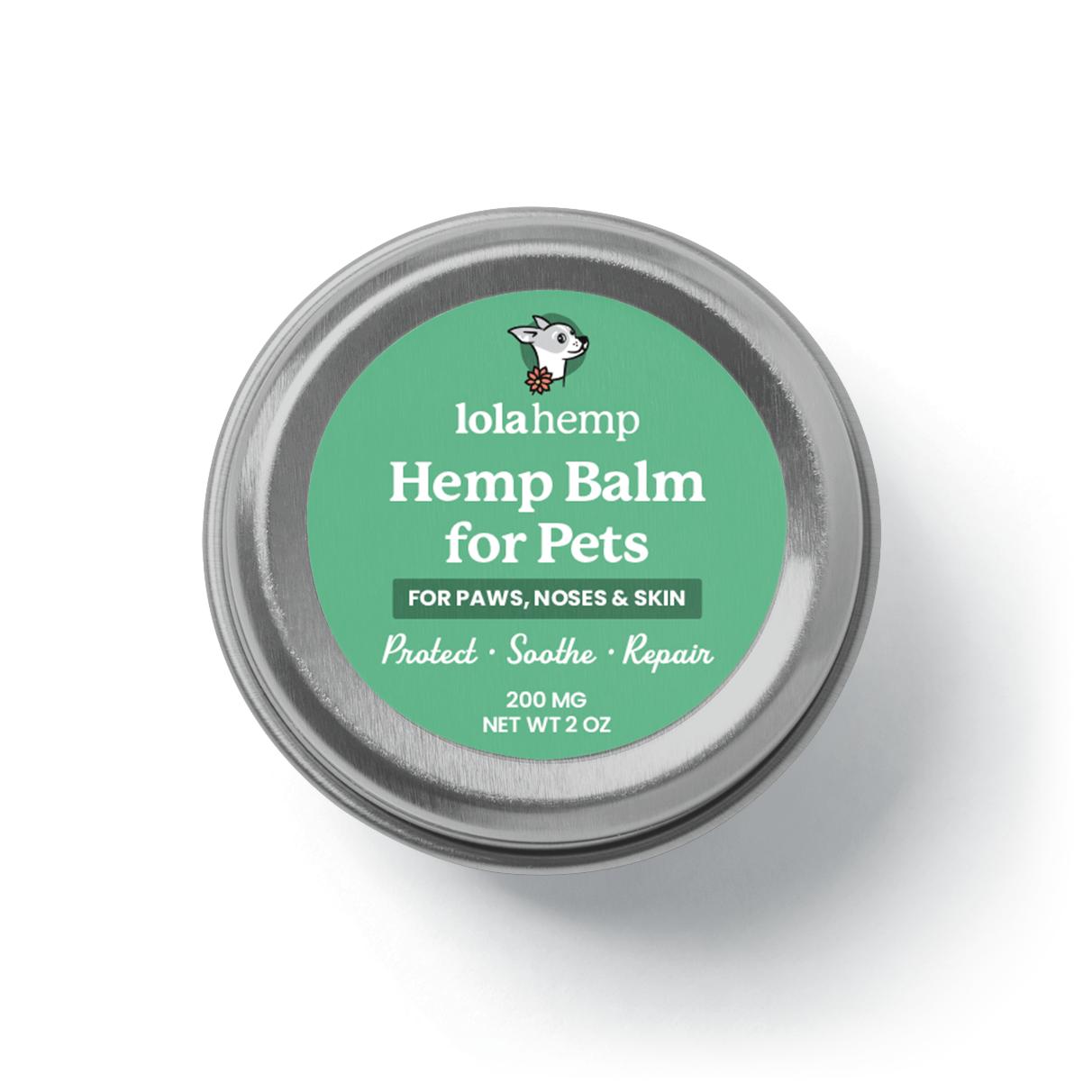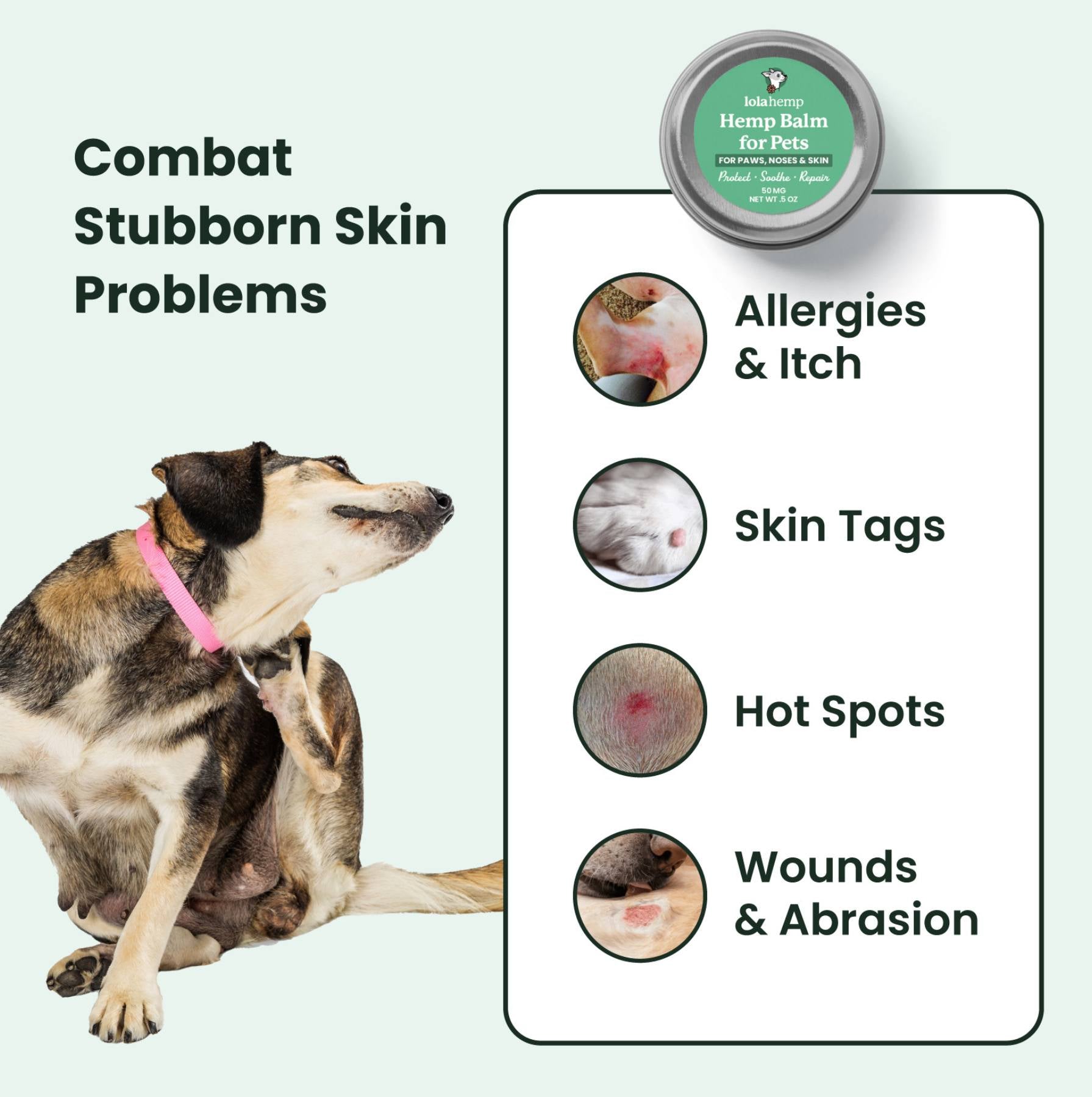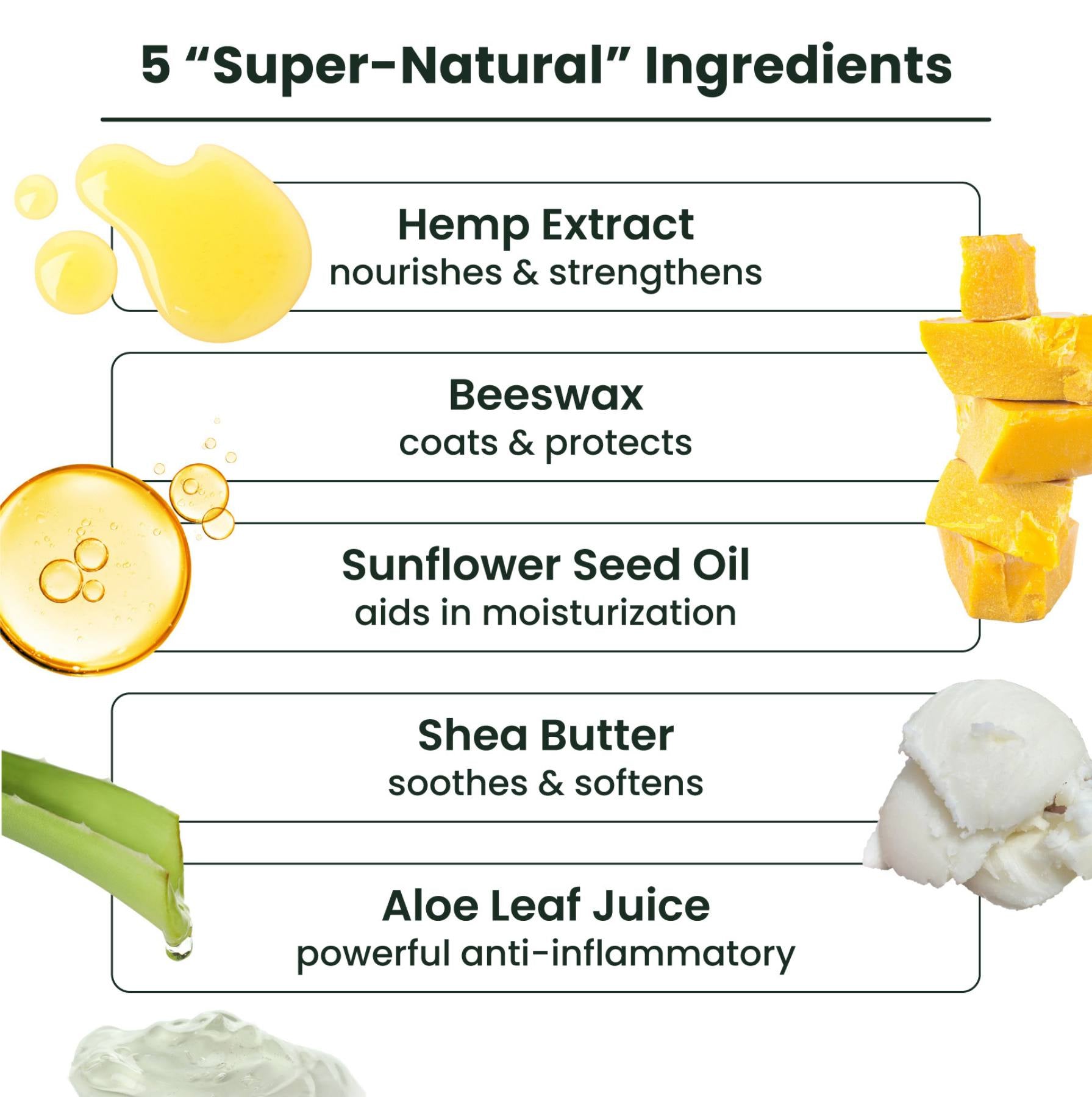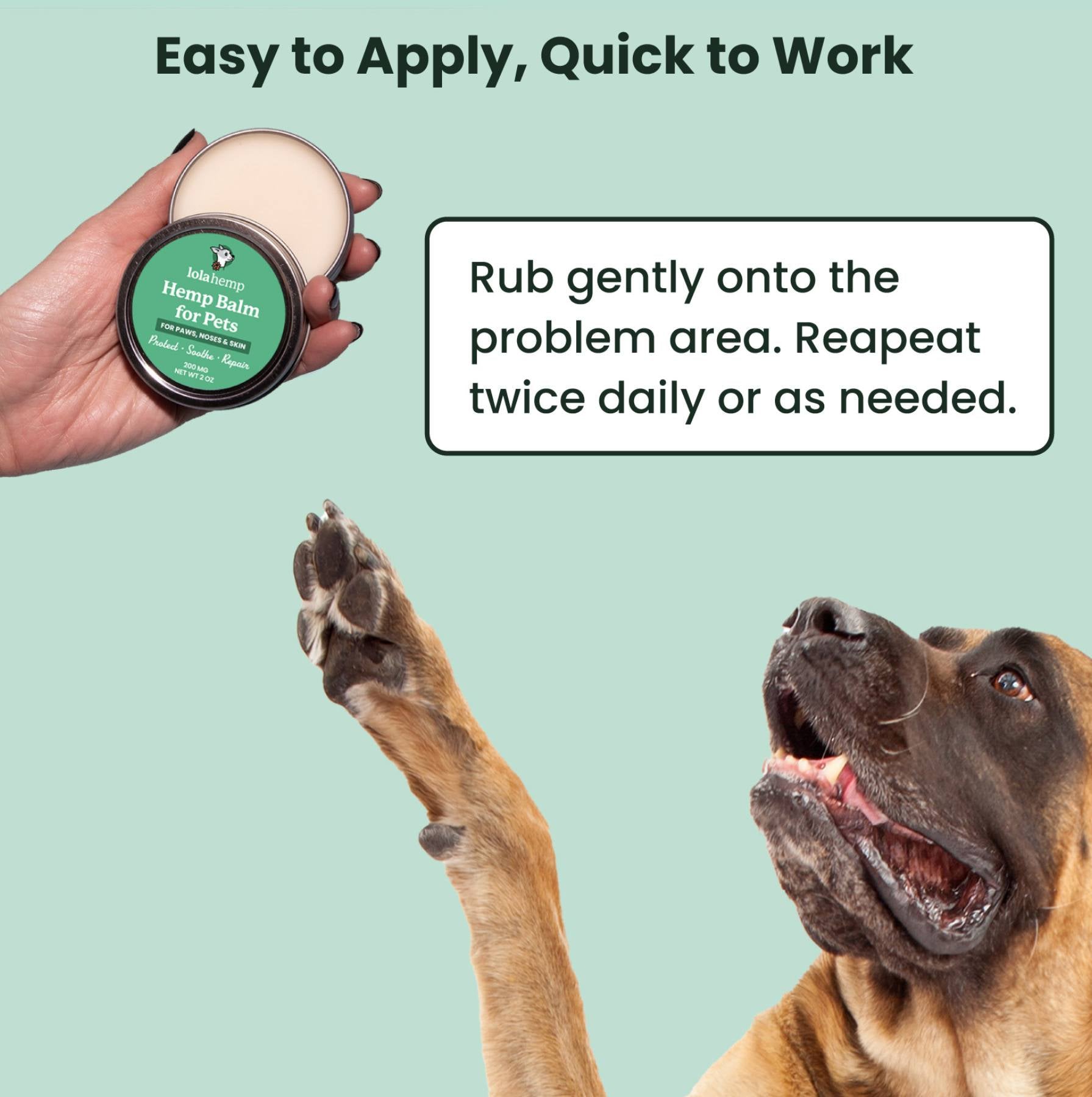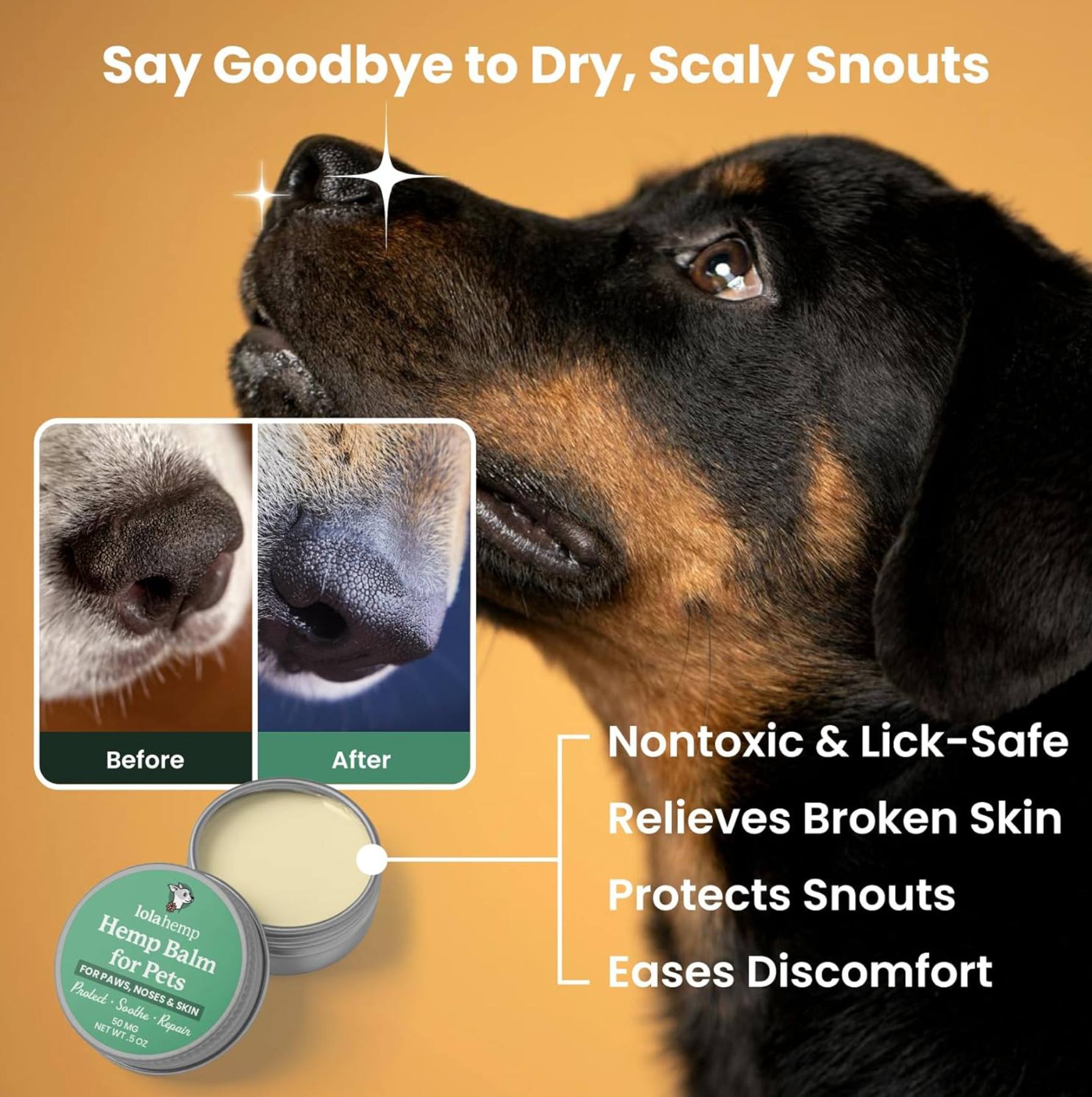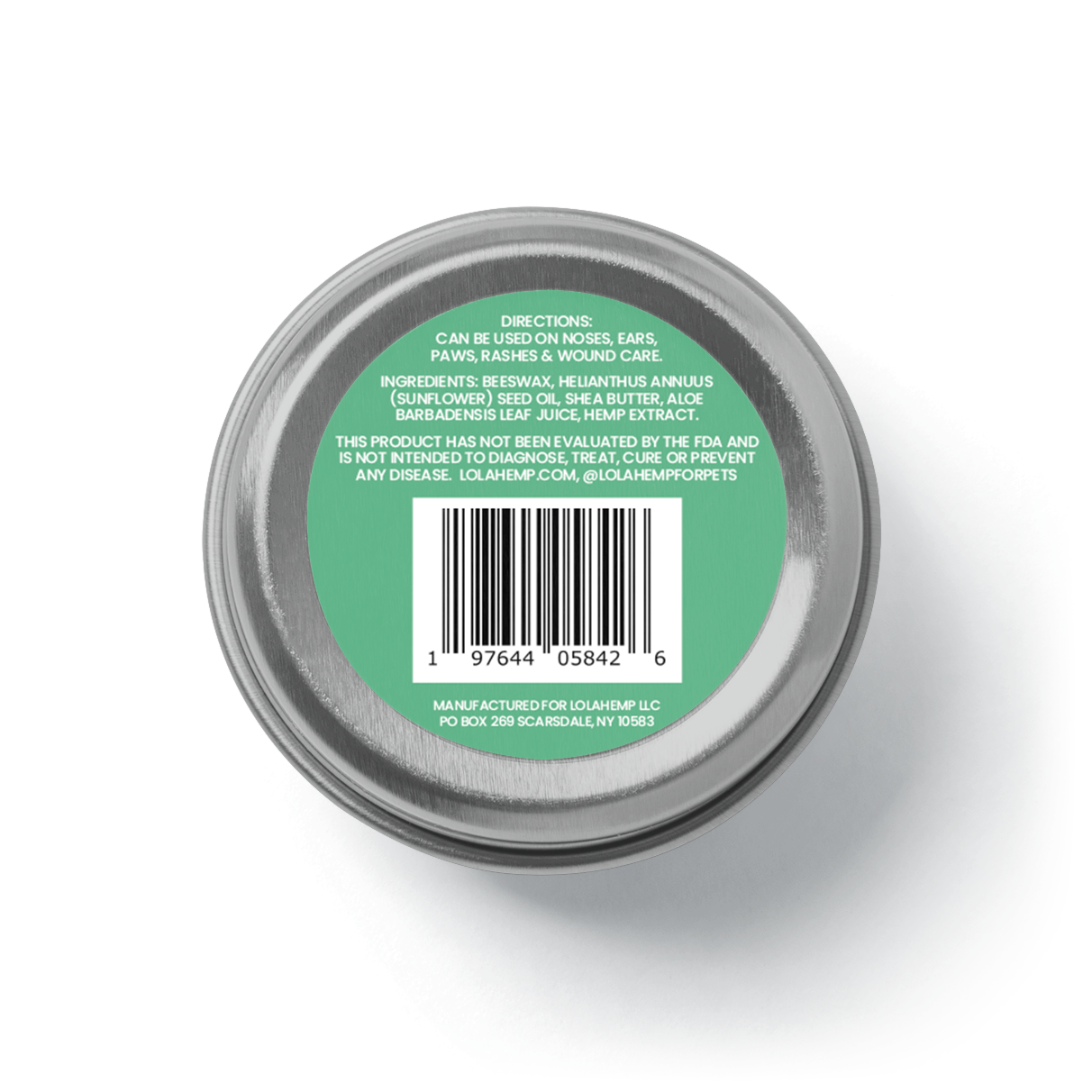A dry nose in dogs is a common concern among pet owners. While it’s not always a sign of a serious health issue, understanding why your dog’s nose is dry can help determine whether action is needed. This guide covers the most common reasons behind dry noses in dogs and what you can do about it.
Note that a dry nose, whether it's caused by allergies or the environment, can be benefited with the use of moisturizers or soothing balms made for dogs. There are options for temporary relief while you sort out the root cause.
Why Is My Dog’s Nose Dry? 4 Common Causes
A dog’s nose can dry out for several reasons, ranging from environmental factors to underlying health conditions. Below are the four most common causes of a dry nose in dogs:
1. Dehydration
Dehydration occurs when a dog loses more fluids than they take in, often due to excessive heat, illness, or insufficient water intake. This can lead to dry skin and a lack of moisture in the nose.
Signs of Dehydration:
- Dry or sticky gums
- Sunken eyes
- Loss of skin elasticity
- Lethargy
How to Help:
- Ensure your dog has access to fresh, clean water at all times.
- Add water to dry food or switch to wet food.
- Monitor your dog’s hydration, especially in hot weather or after exercise.
To keep your dog hydrated at home, always provide fresh, clean water in multiple accessible locations. Adding water or low-sodium broth to their food can increase fluid intake, especially for picky drinkers. You can also offer hydrating treats like ice cubes made from diluted bone broth or watermelon (without seeds or rind).
2. Allergies
Dogs, like humans, can develop allergies to pollen, dust, mold, or certain foods. Allergic reactions can cause inflammation and dryness of the nose.
How Allergies Affect a Dog’s Nose:
- Allergens can irritate nasal tissues, leading to dryness.
- Frequent licking due to irritation can worsen the problem.
- Some allergens also cause nasal discharge, which may dry out and create crustiness.
How to Help:
- Identify and minimize exposure to allergens.
- Use a pet-safe nasal balm to keep the nose moisturized.
- Consult your veterinarian about antihistamines or allergy treatments.
To help manage your dog's allergies at home, regularly wipe their paws and coat with a damp cloth to remove allergens after outdoor exposure. Adding omega-3 fatty acids (like fish oil) to their diet can support skin health and reduce inflammation. An oatmeal bath can also provide soothing relief for itchy skin and irritation.
3. Sunburn & Weather Conditions
Excessive sun exposure, dry air, or cold weather can all impact the moisture levels of a dog’s nose. Dogs with lighter-colored noses are particularly prone to sunburn, while cold weather can cause chapping.
How to Help:
- Apply pet-safe sunscreen before sun exposure.
- Use a humidifier indoors during dry seasons.
- Protect your dog’s nose with a moisturizing balm.
To protect your dog from sunburn, apply pet-safe sunscreen to exposed areas like the nose, ears, and belly, especially if they have short or light-colored fur. Provide plenty of shade and avoid outdoor activities during peak sun hours (10 AM to 4 PM). Additionally, consider protective clothing like UV-blocking shirts or hats for extra coverage.
When Should You Worry About a Dry Nose?
A dry nose isn’t always a cause for concern, but you should seek veterinary advice if your dog’s nose is:
- Persistently dry and cracked
- Accompanied by other symptoms like fever, lethargy, or nasal discharge
- Showing changes in texture, color, or developing sores
If a dog's dry nose is left untreated, it can lead to discomfort, cracking, and even painful sores, making them more susceptible to infections. In severe cases, persistent dryness may indicate an underlying health condition like an autoimmune disorder or dehydration, which can affect overall well-being. Addressing the dryness early with proper hydration, moisturization, and vet consultations when necessary can prevent complications and keep your dog comfortable.
How to Keep Your Dog’s Nose Moist
If your dog’s nose is occasionally dry but not linked to illness, simple home care can help maintain moisture:
- Provide plenty of water.
- Use a dog-safe moisturizing balm.
- Keep your dog’s living environment humid, especially in winter.
- Limit sun exposure and use pet-safe sunscreen as needed.
To keep your dog's nose moist at home, ensure they have constant access to fresh water and monitor their hydration levels. Apply a pet-safe nose balm or a small amount of coconut oil daily to help retain moisture and protect against cracking. Additionally, using a humidifier indoors, especially in dry seasons, can help maintain the natural moisture balance of their nose.
Final Thoughts
A dry nose in dogs is often harmless and can result from simple factors like weather changes or hydration levels. However, if you notice persistent dryness, cracking, or additional symptoms, it’s best to consult your vet. Keeping your dog hydrated and using pet-safe balms can help maintain a healthy, moist nose.
Frequently Asked Questions About Dry Nose in Dogs
Is a dry nose in dogs always a sign of illness?
No, a dry nose in dogs is often harmless and may result from weather, sleep, dehydration, or mild allergies. It becomes a concern only when dryness is persistent or accompanied by other symptoms.
Can allergies cause a dog’s nose to become dry?
Yes, allergies to pollen, dust, mold, or certain foods can irritate nasal tissues and lead to dryness. Frequent licking due to irritation may worsen the problem.
How can I moisturize my dog’s dry nose?
You can moisturize your dog’s dry nose using a dog-safe balm or a small amount of coconut oil. Keeping them hydrated and using a humidifier indoors can also help.
When should I take my dog to the vet for a dry nose?
You should contact a veterinarian if your dog’s nose is persistently dry, cracked, discolored, or accompanied by symptoms like fever, lethargy, or nasal discharge.
Can weather changes make a dog’s nose dry?
Yes, hot, cold, or dry weather can temporarily dry out a dog’s nose. Using moisturizers and protecting your dog from extreme elements can help maintain moisture.

